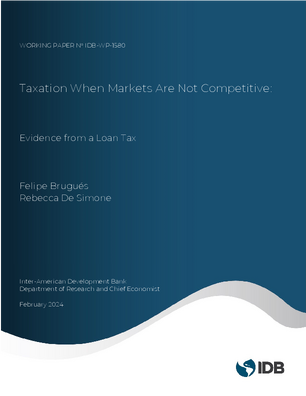Taxation when Markets are not Competitive: Evidence from a Loan Tax
Date
Feb 2024
We study the interaction of market structure and tax-and-subsidy strategies utilizing pass-through estimates from the unexpected introduction of a loan tax in Ecuador, a quantitative model, and a comprehensive commercial-loan dataset. Our model generalizes bank competition theories, including Bertrand-Nash competition, credit rationing, and joint-maximization. While we find the loan tax is distortionary, neglecting the possibility of non-competitive lending inflates estimated tax deadweight loss by 80% because non-competitive banks internalize some of the burden. Conversely, subsidies are less effective in non-competitive settings. If competition were stronger, tax revenue would be 10% lower. The findings suggest that policymakers should consider market structure in tax-and-subsidy strategies.
Generative AI enabled





